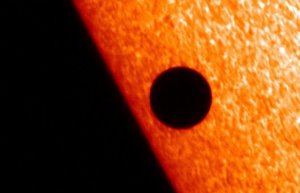The lowest-mass planet to ever be seen spotted with infrared technology orbiting a sun-like star is bright pink.
"If we could travel to this giant planet, we would see a world still glowing from the heat of its formation with a color reminiscent of a dark cherry blossom, a dull magenta," Michael McElwain, a member of the discovery team at NASA's Goddard Space Flight Center, said. "Our near-infrared camera reveals that its color is much more blue than other imaged planets, which may indicate that its atmosphere has fewer clouds."
The planet is called GJ 504b, and orbits its star at about nine times the distance Jupiter spins around the sun, a NASA press release reported.
This finding caused researchers to second-guess their past beliefs about how larger planets are formed.
Science models have predicted large planets, such as Jupiter, bud from debris hanging around newly forming stars. The planet's core would be formed from asteroids and comets colliding, causing a gravitational pull to attract the stellar gas and debris.
This theory works for planets that are close to their stars, but for objects as far away as GJ 504b it doesn't really make sense.
"This is among the hardest planets to explain in a traditional planet-formation framework," team member Markus Janson, a Hubble postdoctoral fellow at Princeton Universitym said. "Its discovery implies that we need to seriously consider alternative formation theories, or perhaps to reassess some of the basic assumptions in the core-accretion theory."
Direct imaging is important in the progression of these discoveries, but it is a very complicated technology.
"Imaging provides information about the planet's luminosity, temperature, atmosphere and orbit, but because planets are so faint and so close to their host stars, it's like trying to take a picture of a firefly near a searchlight," Masayuki Kuzuhara at the Tokyo Institute of Technology, who led the discovery team, said.
GJ 504b is believed to have an active temperature of about 460 degrees Fahrenheit. Its respective star is hotter than the sun.
"Our sun is about halfway through its energy-producing life, but [the distant star] is only one-thirtieth its age," McElwain, said. "Studying these systems is a little like seeing our own planetary system in its youth."
© 2025 HNGN, All rights reserved. Do not reproduce without permission.








